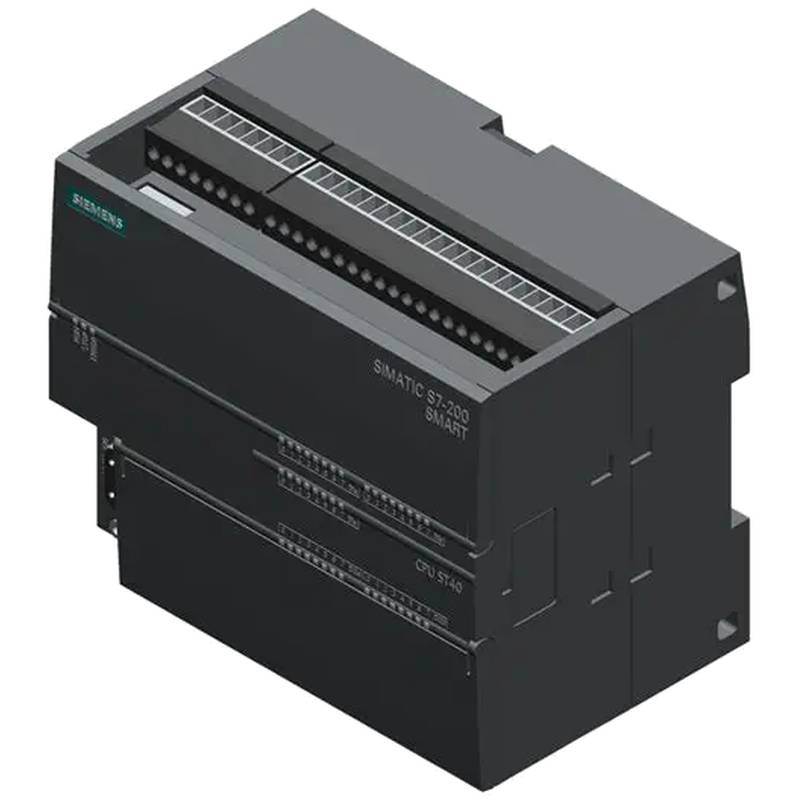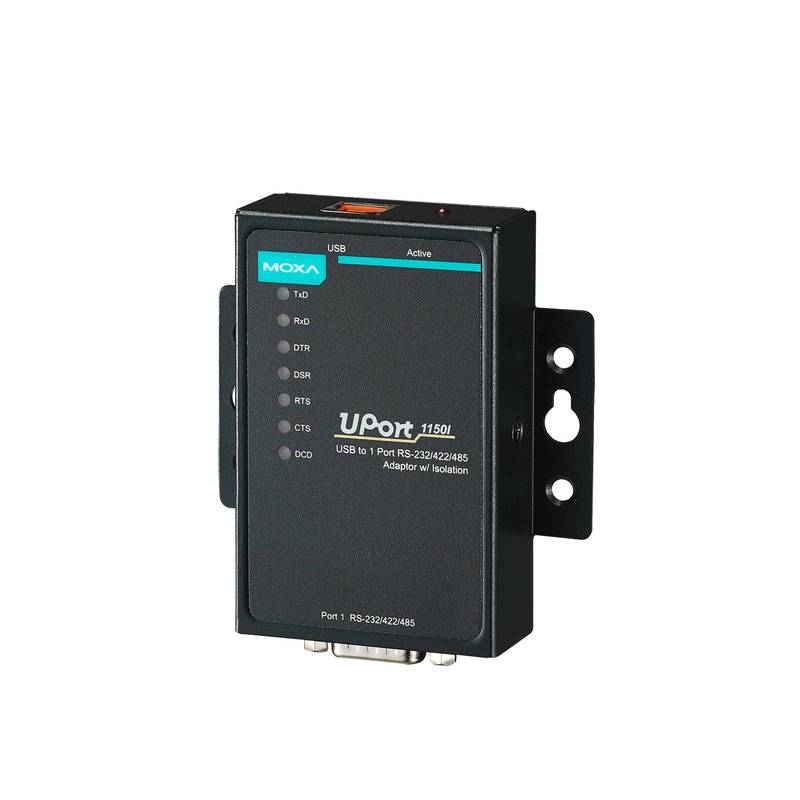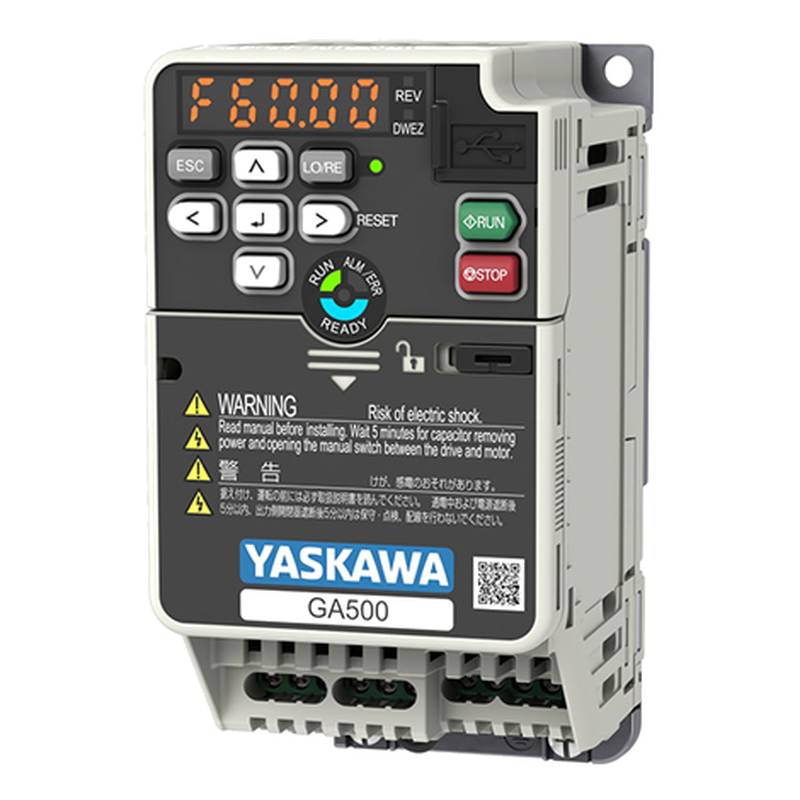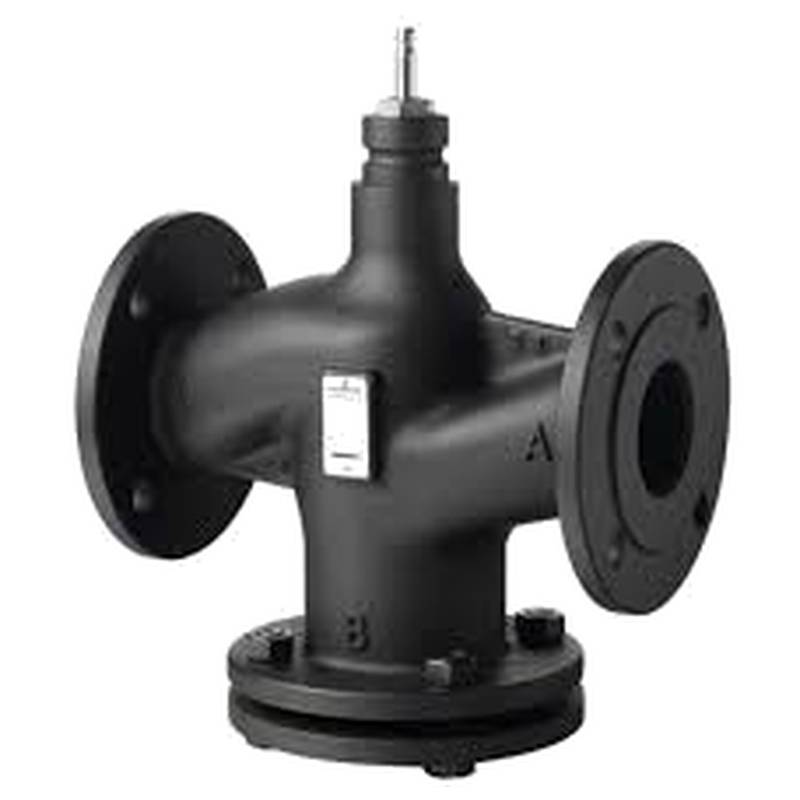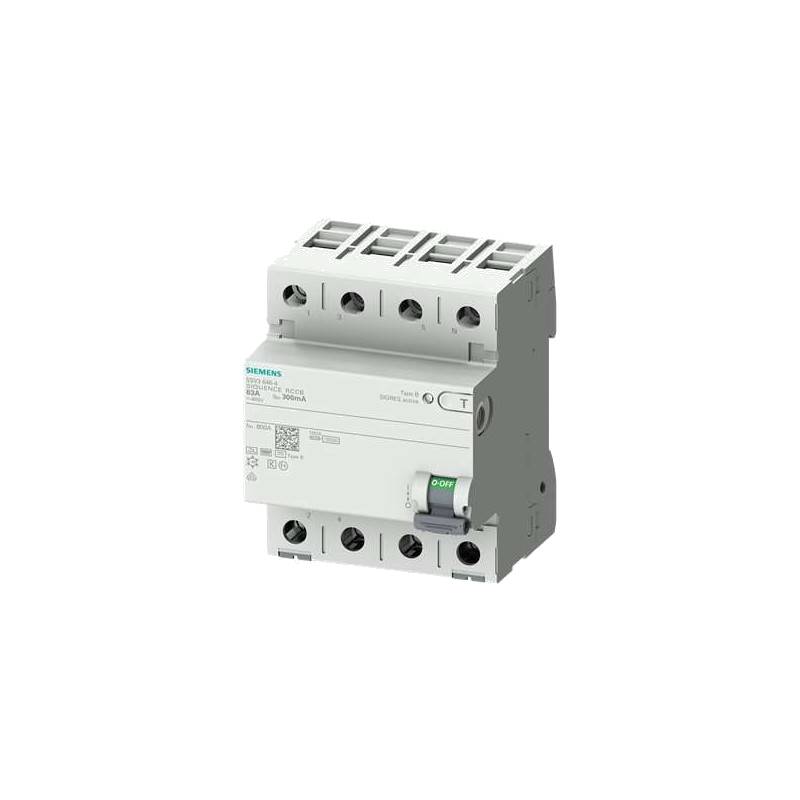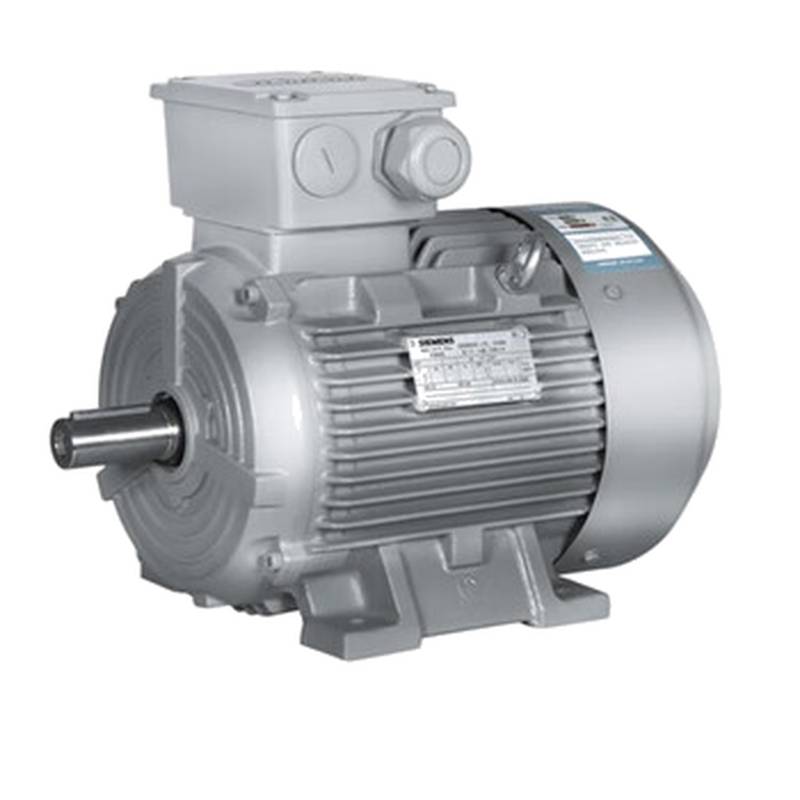
Siemens 6ES7288-1ST40-0AA1: The Intelligent Choice for Compact Automation
The Siemens 6ES7288-1ST40-0AA1, part of the SIMATIC S7-200 SMART family, is a high-performance CPU designed for demanding industrial automation tasks. This compact controller boasts 24 digital inputs (DI) and 16 digital outputs (DO), all operating at 24V DC. With 40KB of program and data memory, it offers robust capabilities for intricate logic and data management. Key advantages include its integrated web server support, enabling remote monitoring and diagnostics, and its rail-mounting design for straightforward installation. The supply voltage range of 20.4-28.8V DC ensures stable operation even with fluctuations in the power grid.
Product Specifications
| Feature | Specification |
| :-------------------- | :--------------------------------------------------- |
| Article Number | 6ES7288-1ST40-0AA1 |
| Product Family | SIMATIC S7-200 SMART |
| CPU Type | CPU ST40 DC/DC/DC |
| Digital Inputs (DI) | 24 x 24V DC |
| Digital Outputs (DO) | 16 x 24V DC (Transistor Output) |
| Supply Voltage (DC) | 20.4V DC (min) - 28.8V DC (max) |
| Program/Data Memory | 40 KB |
| Web Server Support | Yes |
| Mounting Type | Rail Mounting (Standard DIN rail) |
| Current Consumption | Max. 680 mA @ 24V DC |
| Inrush Current | Max. 11.7 A @ 28.8 V |
| Output Current | Max. 300 mA @ 24V DC (Sensor Power) |
| Power Loss | Max. 18 W |
| Backup | Maintenance-free RTC (Real-Time Clock) with 7-day backup |
| CPU Processing Times | Bit operations: Typ. 150 ns/instruction |
| | Word operations: Typ. 1.2 µs/instruction |
| | Floating point arithmetic: Typ. 3.6 µs/instruction |
| I/O Address Area | Inputs: 144 byte |
| | Outputs: 144 byte |
| EMC | Interference immunity acc. to IEC 61000-4-2 |
| Operating Temperature | -20 °C to +60 °C |
| Dimensions (L x W x H)| 8.1cm x 12.5cm x 10cm (approximate) |
| Net Weight | 0.410 Kg |
| Origin | China |
Core Features & Market Positioning
The Siemens 6ES7288-1ST40-0AA1 stands out in the competitive landscape of compact controllers due to its robust feature set and Siemens' established reputation for reliability and innovation. Its "SMART" designation highlights an optimized balance of performance and cost-effectiveness, making it ideal for small to medium-sized automation projects. The integrated web server is a significant differentiator, allowing for convenient remote access for monitoring operational status, diagnosing issues, and even performing basic configuration adjustments without requiring specialized software on-site. This feature streamlines maintenance and reduces downtime, directly impacting operational efficiency. Furthermore, the transistor outputs offer precise and rapid switching capabilities, crucial for high-speed applications.
Key Application Scenarios
This versatile CPU module finds extensive use across various industrial sectors, particularly where compact and efficient control is paramount. Its 24 DI and 16 DO configuration makes it suitable for discrete manufacturing processes, such as packaging lines, material handling systems, and assembly machines. In the food and beverage industry, it can manage conveyor systems and process controls. For building automation, it can integrate with HVAC systems, lighting control, and access control. The high-speed counting (HSC) capability on some inputs also allows for applications requiring precise measurement, like those found in metering or speed monitoring systems. Its ability to support PROFINET and PROFIBUS communication opens doors for integration into larger, more complex networks.
Practical System Integration Guidance
Integrating the Siemens 6ES7288-1ST40-0AA1 into an existing or new system is facilitated by its DIN rail mounting and straightforward wiring. The recommended programming package is STEP 7 Micro/WIN SMART, which provides a user-friendly environment for developing control logic. For digital inputs, the module supports source or sink configurations, with 6 of the 24 inputs capable of high-speed counting functions. The 16 transistor outputs provide a maximum current of 300 mA per output, suitable for driving relays, solenoids, or indicator lamps. Proper wiring is essential; ensuring correct polarity for the DC supply voltage and using appropriately sized conductors for the output loads will prevent damage and ensure reliable operation. Connecting to communication networks typically involves using standard Ethernet cables for PROFINET or specific cabling for PROFIBUS DP.
Operation and Risk Mitigation
Safe operation of the 6ES7288-1ST40-0AA1 relies on adhering to electrical safety standards and proper handling procedures. It's designed for industrial environments, with features like interference immunity against electrostatic discharge. When troubleshooting, common issues might involve input signal faults, output load problems, or communication errors. Checking wiring integrity, verifying input signal status in the diagnostic buffer, and ensuring output loads are within specified current limits are primary steps. The module's diagnostic capabilities, accessible via its web server or programming software, can help pinpoint faults. Always ensure power is disconnected before performing any physical connections or maintenance to mitigate electrical shock hazards.
Scalability & Long-Term Value
The SIMATIC S7-200 SMART platform, including the 6ES7288-1ST40-0AA1, offers a degree of scalability through its compatibility with other S7-200 SMART modules and its ability to integrate into larger Siemens automation ecosystems. While it's a compact controller, its communication interfaces (PROFINET, PROFIBUS) allow it to act as a node within more extensive systems, including integration with HMI panels and SCADA systems. The availability of spare parts and Siemens' commitment to product lifecycle management ensure long-term support and maintainability for deployed systems. For facilities aiming for Industry 4.0 integration, the web server functionality provides a foundational element for future IIoT connectivity and data acquisition.
Frequently Asked Questions (FAQs)
Q1: What are the primary advantages of using the Siemens 6ES7288-1ST40-0AA1?
The Siemens 6ES7288-1ST40-0AA1 offers a compelling blend of compact size and robust functionality. Its integrated web server is a key advantage, facilitating remote monitoring and diagnostics, thereby reducing maintenance costs and potential downtime. The 24 DI/16 DO configuration provides ample I/O for many discrete automation tasks.
This controller is engineered for reliability, a hallmark of Siemens industrial automation products. Its DC/DC/DC power configuration ensures compatibility with common DC power supplies found in industrial settings, simplifying integration. The module is designed for efficient use of space on a DIN rail, making it suitable for control cabinets with limited room.
Furthermore, the transistor outputs offer fast switching speeds, ideal for applications requiring precise timing or high-frequency signaling. Its inclusion of PROFINET and PROFIBUS interfaces enhances its connectivity options within diverse industrial networks.
Q2: What are the key technical specifications for the 6ES7288-1ST40-0AA1?
This CPU features 24 digital inputs and 16 digital outputs, operating at 24V DC. It is equipped with 40KB of memory for program and data storage. The supply voltage range is 20.4V to 28.8V DC, ensuring stable operation.
The module supports standard DIN rail mounting for easy installation. It has a maximum power consumption of 680 mA at 24V DC and a maximum output current of 300 mA per output channel. The device supports communication protocols like PROFINET and PROFIBUS.
Key technical details include a typical bit operation speed of 150 ns per instruction. It also includes a maintenance-free real-time clock with a 7-day backup, crucial for timestamping events.
Q3: What type of applications is the Siemens 6ES7288-1ST40-0AA1 best suited for?
The 6ES7288-1ST40-0AA1 is highly suitable for discrete manufacturing applications. This includes packaging machinery, material handling, assembly lines, and general machine control. Its 24 DI and 16 DO configuration provides sufficient I/O for many typical automation tasks.
It can also be deployed in building automation systems for controlling lighting, HVAC, and access. The high-speed counting capabilities on some inputs make it useful for metered applications or speed monitoring. Its flexibility allows it to be a core component in various industrial control scenarios.
Given its communication options, it integrates well into larger automation architectures, serving as a powerful node in distributed control systems or for standalone machine automation.
Q4: How is the Siemens 6ES7288-1ST40-0AA1 programmed and integrated into a system?
Programming is typically done using the STEP 7 Micro/WIN SMART software package. This software provides a user-friendly interface for creating ladder logic, function block diagrams, and statement lists. System integration involves mounting the module on a standard DIN rail and connecting power and I/O wiring according to the schematics.
The module's I/O address areas are clearly defined: 144 bytes for inputs and 144 bytes for outputs, allowing for straightforward mapping in the program. Communication interfaces like PROFINET or PROFIBUS require proper network configuration and addressing within the overall system.
Detailed wiring diagrams and configuration guides are available in the product's technical documentation, ensuring a smooth integration process for engineers and technicians.
Q5: What are the power supply requirements for the 6ES7288-1ST40-0AA1?
The Siemens 6ES7288-1ST40-0AA1 requires a DC power supply within the range of 20.4V to 28.8V DC. The rated voltage is 24V DC, which is standard for many industrial control systems. The maximum current consumption at 24V DC is 680 mA.
When powering up, be aware of the inrush current, which can reach up to 11.7 A at 28.8V. This is important for selecting an appropriate power supply unit and ensuring proper circuit protection. The module is designed to handle typical industrial power fluctuations within its specified range.
Always ensure that the power supply is properly filtered and stabilized to prevent transient disturbances that could affect the controller's operation or data integrity.
Q6: Can the Siemens 6ES7288-1ST40-0AA1 support remote monitoring and diagnostics?
Yes, the 6ES7288-1ST40-0AA1 features integrated web server support. This allows users to access the controller's status, diagnostics, and configuration data via a standard web browser from any networked device. This capability is invaluable for remote troubleshooting and performance monitoring.
Through the web interface, operators can view I/O status, check memory usage, and access diagnostic messages. This significantly reduces the need for on-site personnel for routine checks and initial fault identification. The web server enhances operational transparency and efficiency.
This feature is a key component for implementing IIoT strategies, enabling data acquisition and remote management of automation assets. It simplifies maintenance operations and can lead to quicker resolution of issues.
Q7: What communication protocols does the 6ES7288-1ST40-0AA1 support?
The Siemens 6ES7288-1ST40-0AA1 supports major industrial communication protocols, including PROFINET and PROFIBUS DP. These interfaces allow the CPU to integrate seamlessly into both modern Ethernet-based networks and established fieldbus systems.
PROFINET enables high-speed data exchange and is suitable for real-time control applications. PROFIBUS DP offers robust communication for distributed I/O and other field devices, widely used in many industrial environments.
The presence of these protocols makes the 6ES7288-1ST40-0AA1 a versatile choice, capable of interoperating with a wide range of Siemens and third-party automation components.
Q8: What are the typical troubleshooting steps for issues with the 6ES7288-1ST40-0AA1?
Begin troubleshooting by checking the power supply voltage and ensuring it's within the 20.4V-28.8V DC range. Verify all wiring connections for physical integrity and correct polarity. Examine the module's diagnostic buffer, accessible via the web server or programming software, for specific error codes or messages.
If output issues arise, confirm that the connected loads do not exceed the 300 mA per channel limit and that the transistor outputs are correctly programmed. For input issues, ensure the signal sources are functioning correctly and providing valid voltage levels within the specified input range.
Communication problems often stem from incorrect network configuration, faulty cables, or incompatible addressing. Double-check network settings, cable integrity, and ensure the module's communication parameters align with the rest of the network.
Q9: What is the memory capacity of the Siemens 6ES7288-1ST40-0AA1?
The Siemens 6ES7288-1ST40-0AA1 is equipped with 40 KB of memory. This memory is allocated for both program storage and data management. This capacity is sufficient for developing and executing logic for a wide range of compact automation tasks.
Of this 40 KB, 24 KB is typically designated for program memory, while 16 KB is available for user data. This includes variables, timers, counters, and other operational data. The module also supports optional microSDHC cards for expanding memory capabilities, particularly useful for data logging or firmware updates.
The efficient memory utilization and processing speed of the CPU ensure that even complex programs can run effectively within these limits, providing reliable control.
Q10: Does the 6ES7288-1ST40-0AA1 support expansion modules?
While the 6ES7288-1ST40-0AA1 is a CPU with integrated I/O, the SIMATIC S7-200 SMART platform is designed to be modular. Expansion can be achieved by adding other compatible S7-200 SMART I/O modules to the system.
This allows users to increase the number of digital or analog inputs and outputs as their application requirements grow. The CPU communicates with these expansion modules via an internal bus, ensuring seamless data exchange.
This modular approach provides a cost-effective way to scale up automation solutions without needing to replace the entire CPU, offering long-term flexibility and investment protection.














